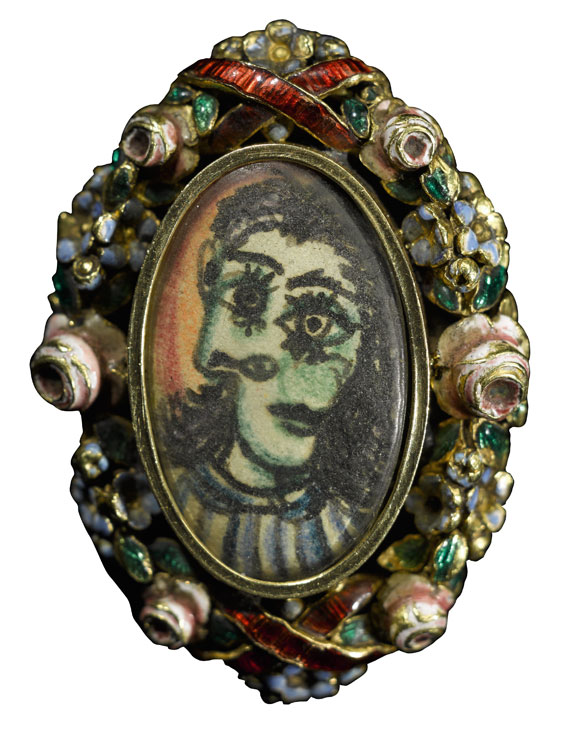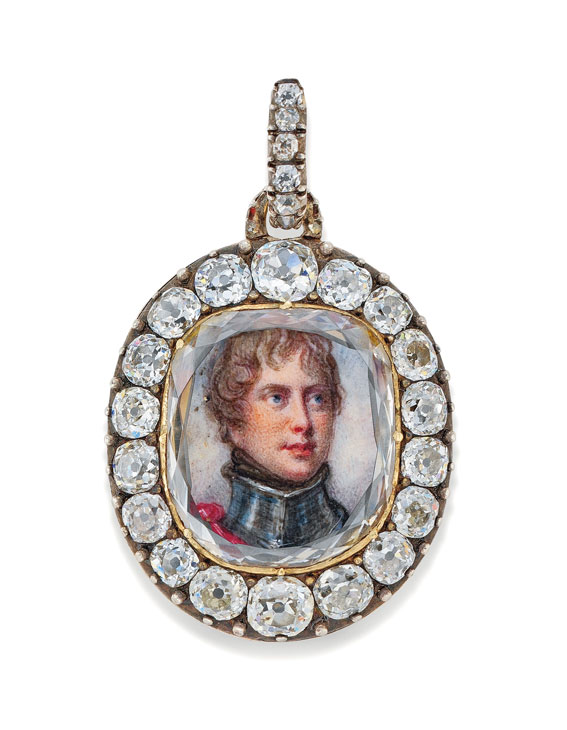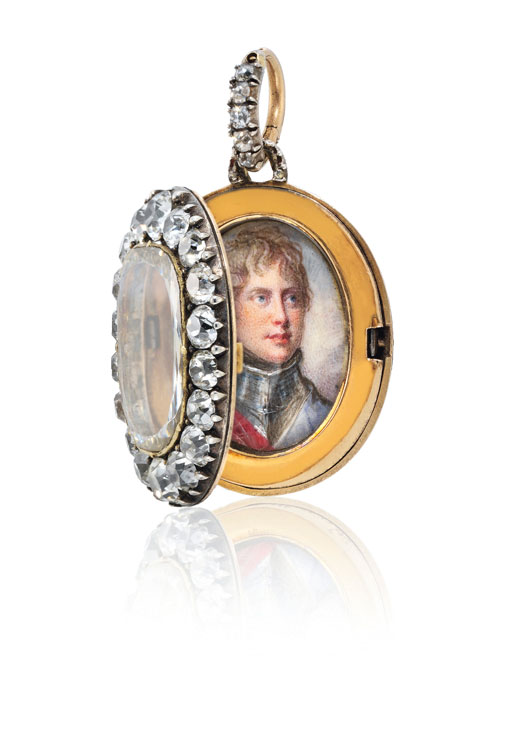Jewel portraits are obviously like buses: you wait for ages and then two turn up at once. First, at Sotheby’s, came the ring that Pablo Picasso presented Dora Maar in the 1930s – a miniature portrait of his lover and muse, executed in ink and coloured pencil and set into an ornate ‘found’ metal ring. Its story was recounted by the art critic and friend of the couple, James Lord, in his book Picasso and Dora (1993). The pair were walking along the Pont Neuf in Paris, when Picasso reproached his mistress for having prevailed upon him to exchange a work of art for a bauble, at which point the ever-tempestuous Dora pulled the said cabochon ruby ring from her finger and flung it into the Seine. She soon regretted the act, and implored Picasso to create a replacement. His creation remained with her until her death in 1997.
Bague de forme ovale: portrait of Dora Maar (1936–39), Pablo Picasso. Photo courtesy Sotheby’s

Now, on 6 July, Christie’s is offering the Maria Fitzherbert jewel, a memento of an even more extraordinary love affair. This was the no less tumultuous relationship between the Prince of Wales, later George IV, and Maria Smythe, the widowed Mrs Fitzherbert, who was a Roman Catholic and a commoner. After their initial meeting, the Prince became a man obsessed. Realising her unwillingness to enter into a liaison with him, and hearing that she was about to leave for the continent, in 1784 he took the drastic action of stabbing himself in the chest with a sword and sending his surgeon to say that he would tear open his bandages unless she came to his side. She obliged. At Carlton House, the Prince told her that nothing would induce him to live unless she promised to marry him.
She consented, but immediately fled to Europe. He begged her to return in a series of long, impassioned letters, but the Prince was obliged to set off himself in pursuit of her. Finally, reluctantly, Maria relented, and they were married illegally and in secret. Two Acts of Parliament forbade any prince married to a Catholic from succeeding to the throne, and it is rumoured that the only chaplain the Prince could find to commit an act of high treason and marry them had first to be released from the Fleet Prison. Truth is always more extraordinary than fiction.
The Maria Fitzherbert Jewel (estimate £80,000–120,000). Photo courtesy Christie’s

Soon after their union, George commissioned this keepsake. While Dora’s ring was made of humble materials, this portrait jewel could hardly have been more precious. Inside the pendant is a miniature portrait of a dashing, courtly prince in armour painted on ivory by the greatest miniaturist of the day, Richard Cosway. Covered by a massive portrait diamond, the portrait is surrounded by 18 rose-cut diamonds, and more diamonds stud the suspension loop. Behind the portrait is said to be a lock of his hair. The opulence of this miniature jewel is rare even by royal standards – George was famously profligate and constantly in debt. A companion jewel was also commissioned which contained a Cosway portrait of Maria, covered by the other half of the portrait diamond. George IV decreed that he should be buried wearing it. The Bishop of Chichester and the Duke of Westminster confirmed that he was.
Cosway painted some 11 works for or of Maria – including miniature portraits of her eye, a love token that usually related to illicit affairs, for only the lover could easily recognise the sitter. The frequency and date of these and other expensive jewels correspond to the periods of intense attachment, estrangement and rapprochement that characterised the couple’s extraordinary relationship. Maria was evidently the love of the prince’s life, although even that that did not prevent him from engaging in other affairs. He and Picasso had much in common. The ring the artist made for Dora Maar sold over estimate in the ‘Actual Size’ sale on 21 June, fetching a mighty £584,750. This extraordinary and precious piece of history, consigned by Maria Fitzherbert’s descendants, is estimated at £80,000–120,000.
The Maria Fitzherbert Jewel (estimate £80,000–120,000). Photo courtesy Christie’s




